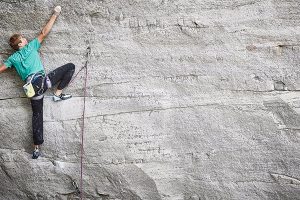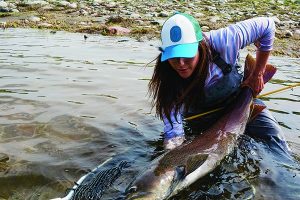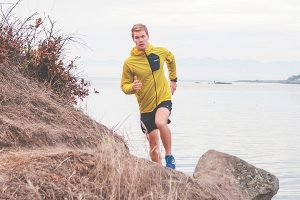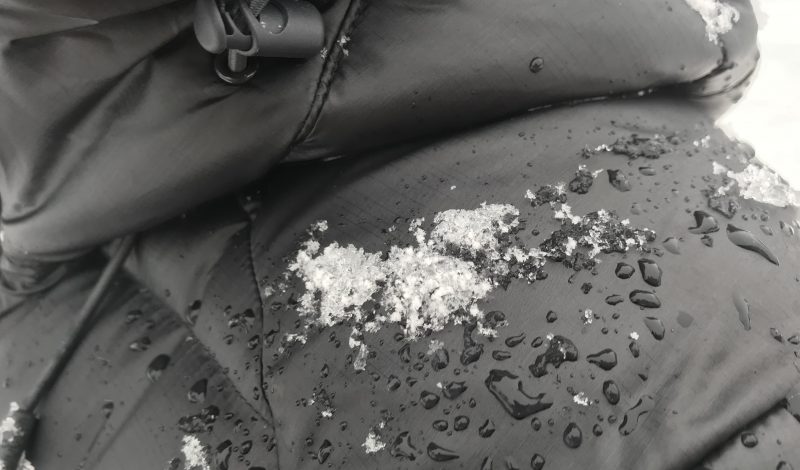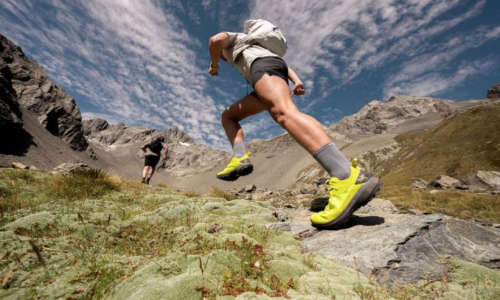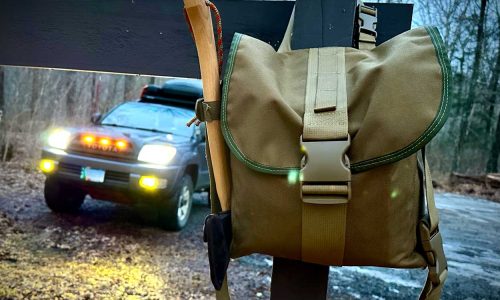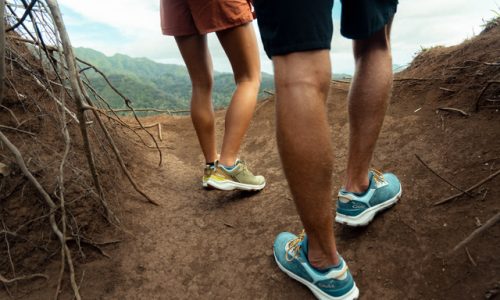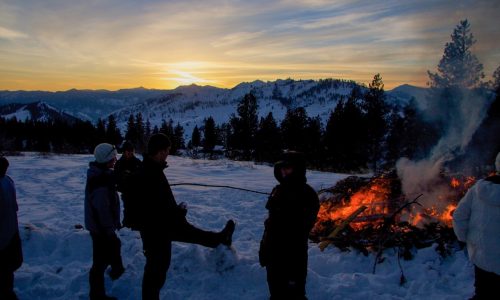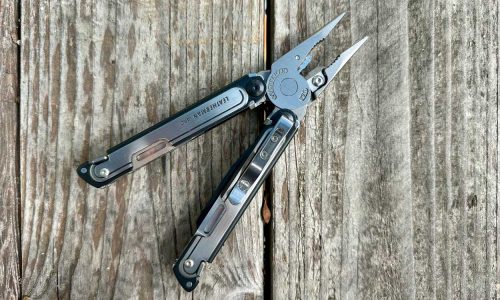We tested these jacket’s in Spring 2018. Since our test, many of them have been discounted and are on sale for the 2018/2019 winter. That means you can score some great deals on these jackets, each of which impressed our testers last year.
Jackets in this test were put through their paces from coast-to-coast, exposed to the wet and cold of the northeast and the heavy March that came to the northern Sierras. Every jacket tested was designed to protect its insulation against moisture using either chemically-treated down, synthetics, or a combination of both, such as the Helly Hansen Vanir Icefall hooded jacket.
Coats in this group tend to have a few more features than their three-season siblings, simply because hard-core winter insulators need to have larger, more adjustable hoods, sealable cuffs, and wind-guards behind zippers. Overall, the companies tested here are developing winter puffers that totally eschew the “shrink it and pink it” tactic that for too long defined how women’s outdoor gear was built and marketed. These are tough, warm, technical coats made for women who need them to be exactly that.
Patagonia Hyper Puff Hoody 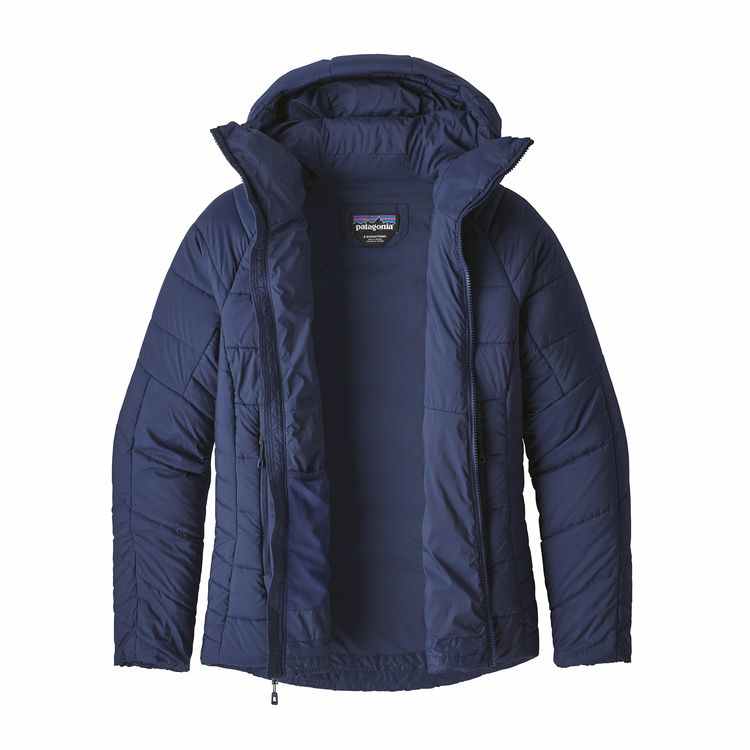
The Patagonia Hyper Puff Hoody is marketed by Patagonia as a jacket for “the harshest alpine conditions.” Our tester found that claim hard to dispute, albeit she just had to deal with the harshest the northern Sierras had to offer in March of 2018. Large without bulk, and ideal for mid-layers, the Hyper Puff held off sideways snow and 20+ mph gusts with relative ease.
Patagonia calls this polyester synthetic, “HyperDAS,” for “dead air space.” It’s exceptionally soft for a down alternative, and packs to the size of a healthy watermelon when ready for the pack or sled. The shell is made of Pertex Quantum, a light, tough material common to Patagonia and known for its wind and moisture resistance, a reputation our tester found to be well-earned.
Our tester was surprised at Patagonia’ unique baffling design, which eschews the traditional “tube” look for a system of variable panels. With the extra stretch provided by the Pertex, the jacket is a much more nimble garment than expected. It’s borderline “streamlined.” The Hyper Puff held up while worn every day for weeks on end during extended dog walks and knee-deep hikes.
The internal drop-in pocket is almost too roomy, as heavier items tend to shift around a bit and become noticeable during activity, a minor gripe. The fitted hood stays taught when adjusted, sliding easily over most protective headgear, and to its benefit, lacks a “visor” or brim, a feature that is rarely functional on insulated jackets. Overall, the fit stands-out, especially given its level of weather protection and ability to insulate against environments most people only experience a couple of times a year, at most.
Helly Hansen Vanir Icefall Jacket
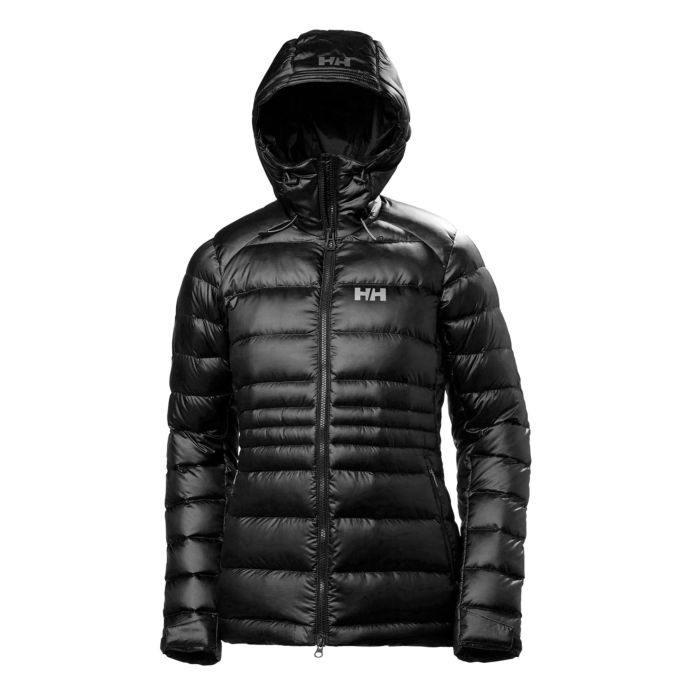
The Vanir Icefall Jacket became our tester’s go-to “snow-day” insulation during the 2018 winter in Truckee, California and the north Lake Tahoe region. With a daily commute to Sugar Bowl on 7,000’ Donner Summit, she remarked that, “When it comes to keeping me warm, it delivered every time.”
Like a number of Helly Hansen insulated jackets, the Vanir leverages a combination of down and synthetic insulation at a 85/15 ratio. The shoulders and hood use water-resistant Primaloft Silver to beat back snow and moisture where it will accumulate the fastest. The majority of the jacket is stuffed with Allied European goose down, and its shell is a tough 40-denier ripstop nylon with a DWR coating the company claims is PFC-free.
The warmth-to-weight ratio here is the best in this test, and it nicely accommodates layers. The cuffs offer a wide exit and an easy-to-grab tab for tightening it down over mitten gauntlets. Up top, the hood will comfortably allow a helmet but it is a bit much without one. When combined with a center-tensioning cord and two side adjustments, the hood helped its wearer confidently hold-off blowing cold and snow. The under-collar and chin-guard is lined with a soft polyester, which our tester became a fan of when darting from her car to the office, or when digging her tires out from under a sudden afternoon dump.
The Vanir felt narrow at times in the underarms, but not enough to restrict movement or be annoying. In most cases, the tester could get away with a minimal base- or mid-layer. Overall, the waist fit as it should, and the hem stayed in place during shoveling, snowshoeing, and lift-served groomer days. Our tester also noted that for a jacket this warm, it maintains a trim, athletic look, even with mid-layers.
LL Bean Wind Challenger Down Jacket
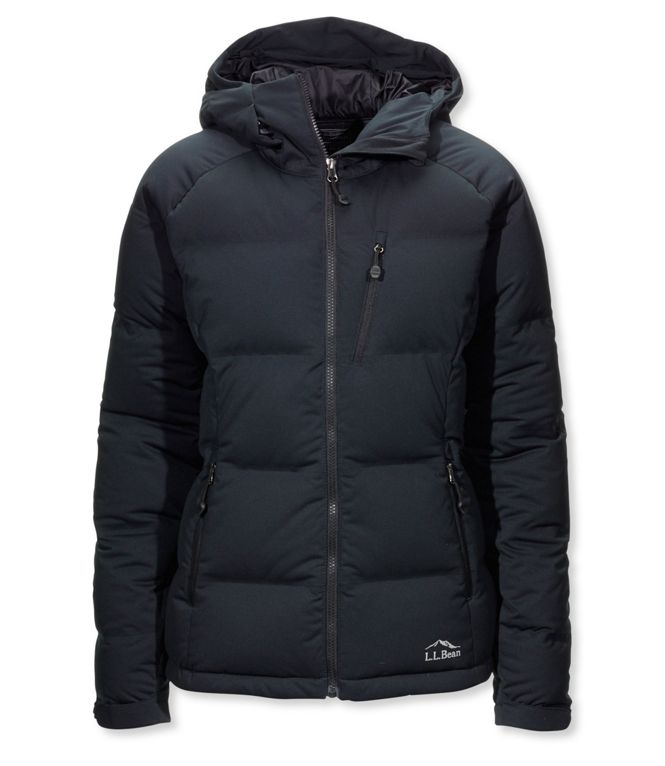
With 850-fill DownTek, the Wind Challenger is ready for the cold of winter and damp drizzle of shoulder season, but it’s not quite ready to be packed away for a backcountry trip up to a winter hut.
This jacket’s tester lauded its warmth and security from the elements, but its size and bulkiness meant it was neither easy to pack nor flattering in fit. The high-zip collar with a plush, against-the-face feel made for a nice way to keep the wind from stinging her face, but naturally it gets wet quickly.
The exterior did excellent against the snow and hybrid crud that comes with a warm winter, and the tester claimed wearing it must be like living in a soft, comfortable storage unit—a comment also related to the coat’s five pockets. That said, it’s designed to be worn above layers and to serve as true wind beater. LL Bean calls the Wind Challenger, it’s “warmest jacket.” Our tester had no reason to dispute those claims.
The adjustable hood slid nicely over a knit winter cap, but when fully zipped, the coat shifted high on the tester’s torso when she sat or kneeled, even when the hem drawcords were yanked taught. The cuffs are sealed with hook & loop (generic Velcro) tabs, and stayed in place when pulled under or over mittens and gloves. While very warm and weather resistant, this jacket may put off some women because of its bulky fit and general girth. In short, this is the type of jacket people point to when making arguments against the appeal of winter puffer jackets.
Marmot Repose Featherless
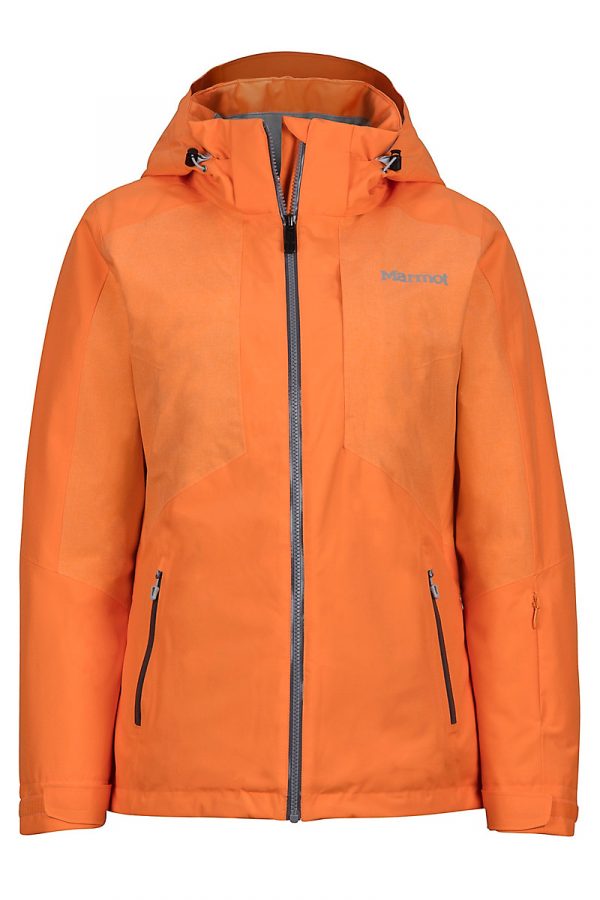
The Marmot Repose Featherless uses a synthetic insulation from 3M Thinsulate. It’s not as light as down or as packable, but it did a good job of keeping our tester warm as her primary insulator during a month in Park City, Utah. She remarked that the jacket kept her cozy with only a thin base layer at about 32º; granted, that was during a day of lift-served laps at Deer Valley. This particular synthetic is found among a number of current Marmot insulated products. It’s heavier than competitors, but very warm.
The Featherless insulation, equivalent to 700-fill down, is sewn into a shell of Marmot’s tough MemBrain waterproof and breathable fabric, helping keep the wet stuff at bay as well as most advanced soft shells. There’s a large interior pocket that our tester said stood out for its ability to contain larger mobile devices, something her other jackets don’t have. This is a feature that could appeal to shoppers as it becomes more common for people to also carry back-up power with them on tours and days at the resort.
At 5’10”, our tester took issue with the fit of the sleeves on her medium. However, with a slender build, the large would have been too much. “Built-in wrist gaiters would be a nice addition,” she told us. In addition to arm length, the cuff circumference made it challenging to don the coat while wearing gloves and mittens. However, a highlight of the sleeve design is its streamlined, wrist-mounted pocket, a feature also found on Marmot’s Men’s Corkscrew Featherless jacket. Outside of some fit issues, the Repose did what it’s supposed to do when worn during cold winter days on, or outside, the resort.
Outdoor Research Floodlight Parka
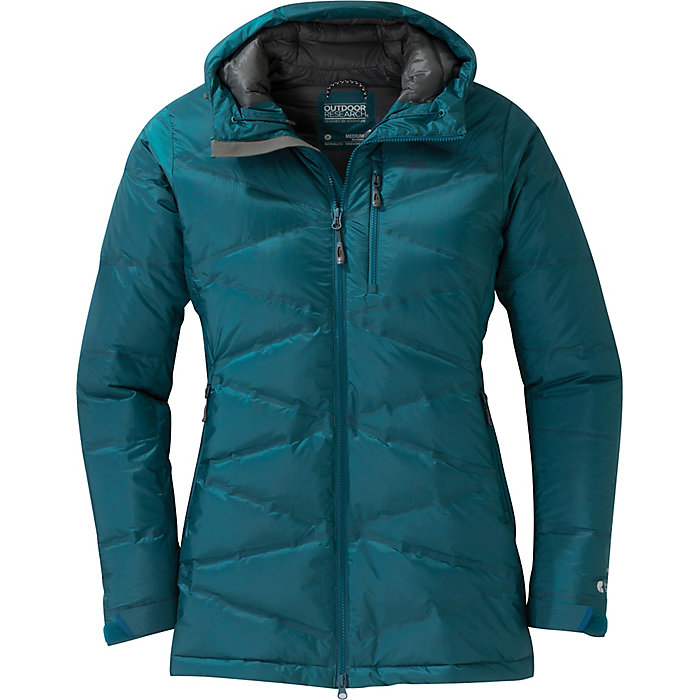
Our tester wore the Floodlight in temperatures ranging from 15º to 40º F while snowshoeing and standing around in the cold. She reported the Floodlight’s Pertex Shield+ two-layer shell sheds wet snow and shoulder season crud with ease. With 650-fill power goose down, it’s not the highest quality down in this test, but the relatively lower volume of down is supported nicely by the wind-resistant exterior and 22-D Pertex Quantum ripstop nylon interior lining allowing for the coat to be worn at temps below freezing.
The Floodlight’s fit limited what our tester could layer underneath it, and she remarked that its waistline was quite narrow, which further limited her use of it in active pursuits, saying, “I don’t feel like this jacket met its marketed promise about athletic use. The tight fit around the waist made it less than ideal to use for activities more athletic than walking.” Jacket size wasn’t the issue, as the tester is consistently a medium, and it fit comfortably through the chest and shoulders.
Our tester also admitted that the tighter fit did pay off in style and daily practicality, enabling the coat to be worn throughout most days where outdoor pursuits weren’t on the agenda. The hood was a tad big, but ideal for a helmet, and the pockets were large enough to store items and keep hands warm when needed.
If you’re looking for a winter insulated puffer that nicely balances looks and urban practicality with enough technical chops to fight off most of what winter will deliver, our tester felt the Floodlight Parka is a great option. It would also be a solid choice for travel and cold-season urban commutes. However, anyone needing something for consistent, hard-weather use in the mountains may want to seek a jacket with a better fit.

